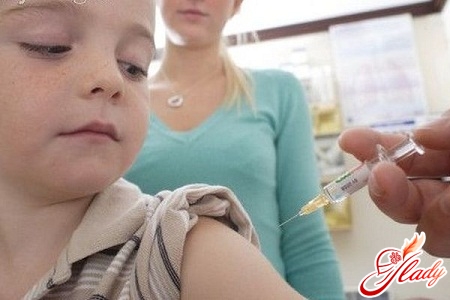 Child psychologists believe that pets– whether it is a dog or a cat, a parrot or fish, a turtle, a hamster, have a beneficial effect on the educational process. The child learns to take care of a weaker and more defenseless creature, in addition, playing with a pet has the best effect on the psyche of children. Unfortunately, recently such an unpleasant phenomenon as an allergy to animals in children has become increasingly common. Allergies can have different types of manifestations, so they can be confused with some other disease. Parents should carefully monitor the child's condition. The main symptoms of an allergy to animals in children are:
Child psychologists believe that pets– whether it is a dog or a cat, a parrot or fish, a turtle, a hamster, have a beneficial effect on the educational process. The child learns to take care of a weaker and more defenseless creature, in addition, playing with a pet has the best effect on the psyche of children. Unfortunately, recently such an unpleasant phenomenon as an allergy to animals in children has become increasingly common. Allergies can have different types of manifestations, so they can be confused with some other disease. Parents should carefully monitor the child's condition. The main symptoms of an allergy to animals in children are:
- nasal congestion, nasal discharge, frequent sneezing
- redness of the eyes, severe itching, lachrymation
- difficulty breathing (shortness of breath, suffocation)
- wheezing, wheezing in the lungs, dry "barking" cough
- skin itching, redness, rash, edema
At reception at the allergist
If a child has one or moresuch symptoms, then you need to consult an allergist as soon as possible. The doctor will prescribe certain diagnostic methods that can be used to identify the allergen that caused the allergy. After all, the allergy may not be to an animal, but to some other irritant. Below is a description of the main types of diagnostics for various allergic reactions.
- Skin tests
- Study of specific antibodies Ig E
- Provocative tests
- Elimination tests
The study is most often performed on the skin.forearms. On the area of skin treated with alcohol, shallow scratches or punctures are made (no more than 1 mm deep), and then a drop of the allergen is applied to the damaged skin (no more than 15 samples at a time). If after some time a slight swelling or redness develops at the test site, then an allergy to the corresponding allergen is assumed.
This test requires a blood draw from a vein. The information it provides is essentially similar to that obtained from a skin test.
Such research is carried out only inallergological hospitals for strict indications - in cases where skin tests or blood tests do not give a clear picture. During this test, a small amount of allergen is introduced into the patient's nose, under the tongue or directly into the bronchi and the subsequent reaction is assessed. This study is dangerous because it can cause a very strong allergic reaction in the patient, which is why it is carried out in the presence of a doctor who can provide emergency medical care.
Elimination is the removal of the allergen.This is a diagnostic procedure in which contact with the suspected allergen is excluded. A striking example of an elimination test is an elimination diet for food allergies. The suspected allergenic product is completely eliminated from the patient's diet. If 7-14 days after eliminating the product, there is an obvious improvement in the condition, then we can confidently say that it was this product that caused the allergy.
But the named methods, of course, only givesome information about the disease. A more accurate diagnosis can be made by the doctor based on the results of tests, interviews, examinations and response to treatment. One of the most common allergies is an allergy to animals in children. Allergenic activity is caused by the hair, saliva, dandruff, feathers, urine and excrement of our smaller brothers. However, even this type of allergy has its own differences. Most often, manifestations of an allergy to cats in children take the form of allergic rhinitis and conjunctivitis, sometimes even bronchial asthma. And then it is necessary to take measures. First of all, it is necessary to minimize direct contact with the animal. The pet will need to be combed more often and washed at least once a week. To reduce the content of skin and hair particles in the room, it is necessary to remove carpets and all objects that accumulate dust. Treatment of allergic manifestations is prescribed by a doctor. In the case of conjunctivitis, which is the most common sign that an allergy to dogs has developed, children may be prescribed cold compresses and "artificial tears" to reduce discomfort. If this is not enough, the doctor may prescribe anti-inflammatory and anti-allergic drugs in drops or tablets. In the case of allergic rhinitis, anti-inflammatory and anti-allergic drugs are also used. In addition, a very successful treatment method is used - specific immunotherapy with allergens. The essence of this method is that an increasingly concentrated solution of the allergen is introduced into the patient's skin over several weeks. In this way, the body gradually "learns" to produce something like an antidote to this allergen.
Is bronchial asthma a verdict?
 Bronchial asthma is more severea disease that requires daily treatment. Treatment should be carried out under constant supervision of a doctor. There are several groups of drugs in the treatment of asthma, among which two groups can be distinguished - symptomatic and basic. The action of symptomatic drugs is aimed at restoring bronchial patency and relieving bronchospasm. This also includes so-called "first aid" drugs for quickly relieving an asthma attack. Such drugs are used only when necessary. Basic drugs aimed at suppressing the inflammatory process in the bronchi, on the contrary, do not have an immediate effect and are used for a long time, since inflammation in the bronchi in bronchial asthma is chronic. We must not forget about non-drug methods of treating bronchial asthma, which, together with drugs, lead to the best results. These include the following:
Bronchial asthma is more severea disease that requires daily treatment. Treatment should be carried out under constant supervision of a doctor. There are several groups of drugs in the treatment of asthma, among which two groups can be distinguished - symptomatic and basic. The action of symptomatic drugs is aimed at restoring bronchial patency and relieving bronchospasm. This also includes so-called "first aid" drugs for quickly relieving an asthma attack. Such drugs are used only when necessary. Basic drugs aimed at suppressing the inflammatory process in the bronchi, on the contrary, do not have an immediate effect and are used for a long time, since inflammation in the bronchi in bronchial asthma is chronic. We must not forget about non-drug methods of treating bronchial asthma, which, together with drugs, lead to the best results. These include the following:
- Respiratory gymnastics, special methods of breathing and the use of breathing simulators.
- Physiotherapy
- Climatotherapy (for example, speleotherapy - treatment in salt mines)
- Reflexotherapy and its modifications (acupuncture, electro-puncture, acupressure, etc.)
How to reduce allergy manifestations?
And yet, in fairness, it must be said,Although doctors unanimously advise a child suffering from allergies to avoid contact with animals, it is not so necessary to do this. After all, this would mean depriving him of the joy of communicating with his beloved friend, and this can cause him great emotional trauma. So what should you do if you are faced with the manifestation of an allergy to animals in children, but cannot imagine life without a furry (feathered, scaly, etc.) family member? The most common pets in families with children are cats and dogs. Oddly enough, families that keep one or more dogs do not often encounter such a phenomenon as an allergy to dogs in children. On the contrary - children in such families suffer from respiratory diseases much less often than their peers. And the answer lies in the high content of endotoxins - natural pathogens - in the apartment, which leads to constant stimulation of the immune system, and this, in turn, leads to a decrease in the manifestation of allergies to dogs in children. If allergies to dogs in children have nevertheless appeared, then the dog must be washed with a special shampoo and the animal's diet must be reviewed. After all, in a healthy animal with the correct metabolism, the presence of allergens in the secret is minimal. With cats, everything is much more complicated. These four-legged pets are distributors of the most powerful and aggressive allergens, which, due to the mobility of these animals, are carried throughout the entire territory of residence. Therefore, allergies to cats in children are much more common. Moreover, allergies to cats in children are more severe than allergies to other animals. And preventive measures are less effective. If you remove the cat from the premises, then even after thorough cleaning, at least three to four months will pass before the number of allergens decreases to a level safe for health. Now there are many special cat washing products on sale, with the help of which the number of dangerous allergens on the animal's fur is reduced. But these remedies are effective only if the manifestations of allergy to cats in children are not too strong. There is another way to avoid allergy to cats in children - castration of the animal. After castration, the animal's body produces much less allergens. So, if, having analyzed all the pros and cons, you still decide to take into your home or are already raising a furry pet, but at the same time want to reduce the risk of allergy to animals in your children, then you need to follow the following rules:
- If you have a kitten or a puppy, then, after reaching the 8-month period, castrate your pet.
- For the care of pets, always use special hygiene products (for example, a special filler for the toilet, and not scraps of newspaper).
- Make it a rule to clean your living quarters as often as possible. In particular, wet cleaning - no less than every other day.
- Do not allow the child to sleep with the animal. Teach him to wash his hands with soap after each game with the animal;
- And, of course, pay enough attention to caring for the animal's hair, because this is the main allergen. Regularly, at least once a week, comb the animal's hair, and do it outside the house.
- Wash your pet at least once a month.
By following these simple requirements, yousignificantly reduce the risk of allergies to animals in children and other household members. You will not be able to deprive your children of the joy of communicating with their faithful four-legged friends, because every child at all times dreamed of having a cheerful and loyal friend! We recommend reading:









